IS THERE
LIFE AFTER
FOOTBALL?
IS THERE
LIFE AFTER
FOOTBALL?
SURVIVING THE NFL
JAMES A. HOLSTEIN, RICHARD S. JONES &
GEORGE E. KOONCE, JR.

NEW YORK UNIVERSITY PRESS
New York and London
www.nyupress.org
2015 by New York University
All rights reserved
References to Internet websites (URLs) were accurate at the time of writing.
Neither the author nor New York University Press is responsible for URLs that may have expired or changed since the manuscript was prepared.
ISBN: 978-1-4798-6286-3
For Library of Congress Cataloging-in-Publication data, please contact the Library of Congress.
New York University Press books are printed on acid-free paper, and their binding materials are chosen for strength and durability. We strive to use environmentally responsible suppliers and materials to the greatest extent possible in publishing our books.
Manufactured in the United States of America
10 9 8 7 6 5 4 3 2 1
Also available as an ebook
Dedicated to
the players of the NFL,
past and present
CONTENTS
ACKNOWLEDGMENTS
Above all, we thank the NFL players and former players who talked to us about their football lives. They are a genuinely impressive and interesting cast of characters.
The book also reflects the generous input of friends, colleagues, and students who talked football with us over the course of the project. At Marquette University our friend and chair, Roberta Coles, encouraged our efforts and, despite her Chicago roots, became a Packers fan along the way. We also thank our colleagues and students in the Department of Social and Cultural Sciences, and across the university: Jimmy Butler, Junior Cadougan, Louise Cainkar, John Cotton, Alexandra Crampton, Deb Crane, Tom Ford, Steve Franzoi, Beth Godbee, Angie Harris, Kim Salas Harris, Heather Hlavka, Ed Inderreiden, Gale Miller, Matt Mitten, Dawne Moon, Sameena Mulla, Paul Nollette, David Nowacek, Alex Peete, Jane Peterson, Adrienne Ridgeway, Ryan Seebruck, Olga Semukhina, Meghan Stroshine, John Su, Nick Szczech, Darren Wheelock, Marcia Williams, and Amelia Zurcher. Our appreciation also extends to those outside the university: Jun Ayukawa, Mitch Berbrier, Nancy Berns, Susan Chase, Jeffrey Chin, Suzy Clarkson Holstein, Chris Corey, Dana Ellingson, Bob Emerson, Kerry Ferris, Jessie Garcia, Scott Harris, Ray Hinojosa, Doni Loseke, Kathe Lowney, Linda Permaul, Nad Permaul, Jack Spencer, the Rev. Arthur Webb, Jr., Joseph E. Williams, and Pansy Yee.
Special thanks go to Joel Best, who encouraged us to venture outside the staid academic realm and masterfully showed us the way. Jim Holstein took a hiatus from his career-long collaboration with Jay Gubrium to work on this project, and thanks Jay for the space and support. His work always bears Jays intellectual imprint.
Ilene Kalish, our editor at NYU Press, has been enthusiastic and demanding from the start. Her insight, expertise, and professionalism are evident throughout. Thanks for the superb guidance thats made the book so much better. We definitely appreciate everything the rest of the staff at NYU Press did to bring the project to fruition, especially Caelyn Cobb, Dan Geist, and Dorothea Halliday.
Finally we thank the anonymous reviewers of the manuscript for their helpful insights and suggestions.
Note to the Reader
George Koonce plays a unique role in this book: he is both an author and the subject of many sections of the text. To distinguish his subject and author voices, we have italicized all direct quotations from Koonce, as they have been elicited through interviews. Thus, his subject voice is always in italics. Many of the interviews for the book were conducted with promises of confidentiality. Pseudonyms for players and teams were used in these instances. Consequently, some of the names of players quoted in the book cannot be found in NFL records. Player interviews from public media are attributed to actual sources and the names in these are authentic.
INTRODUCTION
ITS ALL OVER!
 George, dont you realize, thats it!
George, dont you realize, thats it!
She said it with love and compassion, but Tunisia, my wife, was telling me that my NFL career was over. I didnt want to hear it.
I asked her, Why the hell would you say some shit like that?
George, youre done, she repeated. Its all over!
I didnt talk to her for a couple of weeks. Thats when I started going to the beach and spending three or four days by myself. I would say, Tunisia, Im going to the beach on Thursday. Ill be back on Monday, and she would say, Really? OK. And the beach was about two hours away. I was pissed off, hurt, angry, depressed. I just wanted to get out of there. I didnt really want to be around people who were asking me, George have you talked to anybody, have any teams given you a call? I didnt have an answer. Well, I had the answer, but I didnt want to tell people. I was basically a failure in my mind. I was totally numb. I was in a dark and lonely place. I was embarrassed to talk with friends in the league. I envied them. So Id get in my Chevy Suburban and whatever happened that day was going to happen. I didnt really care....
It was on the drive back home one day that I took a turn at 75 miles per hour just to see what would happen. I flew off the road and the truck ended upside down in a ditch. Thank God, I didnt hit anyone. But I survived. By the grace of God, I survived. Maybe, in retrospect, it was a suicide attempt. At the time I just didnt care.
But the paramedics werent going to cart me off. No chance. The football tough guy in me refused to get into that ambulance. Tunisia drove me to the house and saved my life with words, not medicine.
George, she said, I dont understand what youre going through, but I sympathize. We cannot reinvent who you are, but we can redefine who you are.
After we got home, Tunisia said to me, Well, did you accomplish what you intended?
I told her, Yeah, and that part of me is dead now and Im ready to move on.
After nine years as a starting linebacker in the NFL, George Koonces football days had come to an end. He was depressed. Perhaps suicidal. Emotionally estranged from his wife. Avoiding his friends. Why had such a rewarding career boiled down to this? Is this what retirement amounts to for NFL players? What can they expect from life after football?
George Koonces account of the end may not be typical, but its not unique. It expresses many common themes of how ex-NFL players get on with their lives. Like Koonces account, the stories are complex and often paradoxical. NFL careers are relatively short3.5 years according to the National Football League Players Association (NFLPA)yet their impact lasts far longer. Recently, the spotlight has focused on tragedies, poignantly and publicly exemplified in the suicide of former All-Pro linebacker Junior Seau. At age 43, Seau shot himself to death in May 2012. Seau had been out of the game for less than 18 months. He had actually first retired several years earlier, in 2006. At the time, Seau referred to the move as his graduation because he was simply not going to stop working. He was moving to the next phase of his life, which lasted only four days before he signed to play several more seasons for the New England Patriots. Retirement on both occasions proved difficult, and ultimately tragic. His heartbreaking story epitomizes the difficulties confronted by many former NFL players. Seaus untimely struggles and ultimate demise literally prompt the question: Is there life after football?
Next page

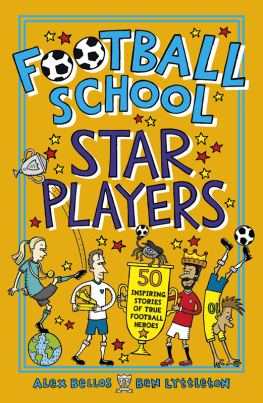
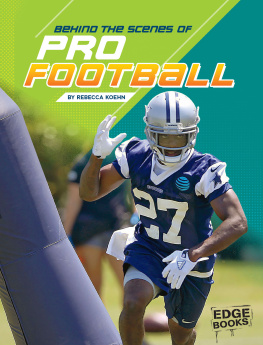
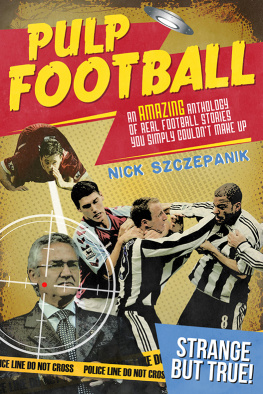

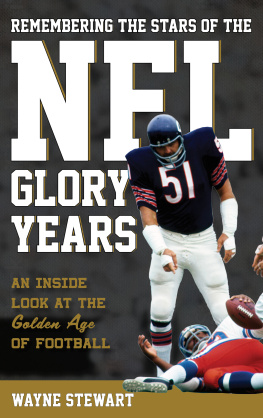
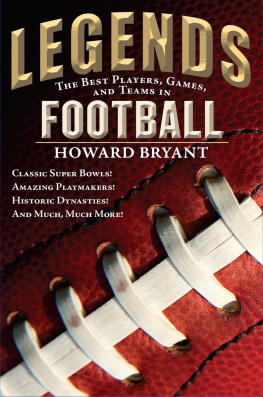
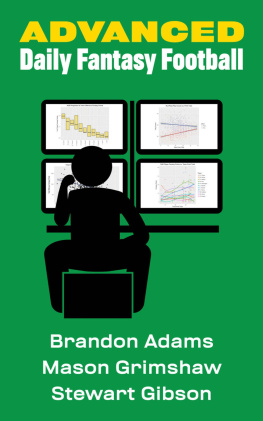

 George, dont you realize, thats it!
George, dont you realize, thats it!